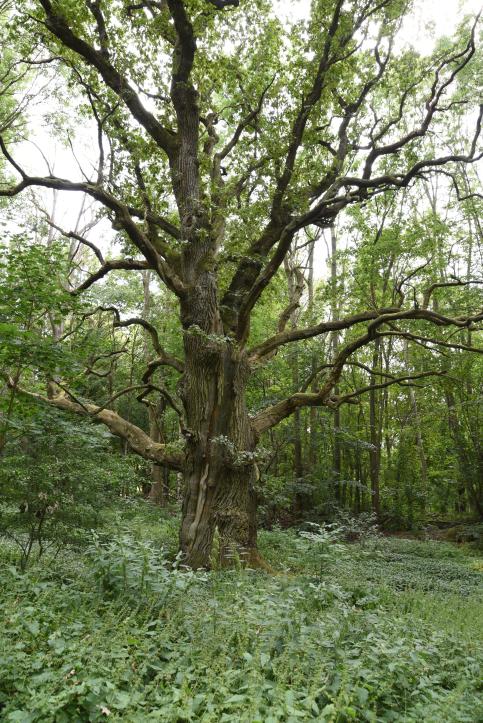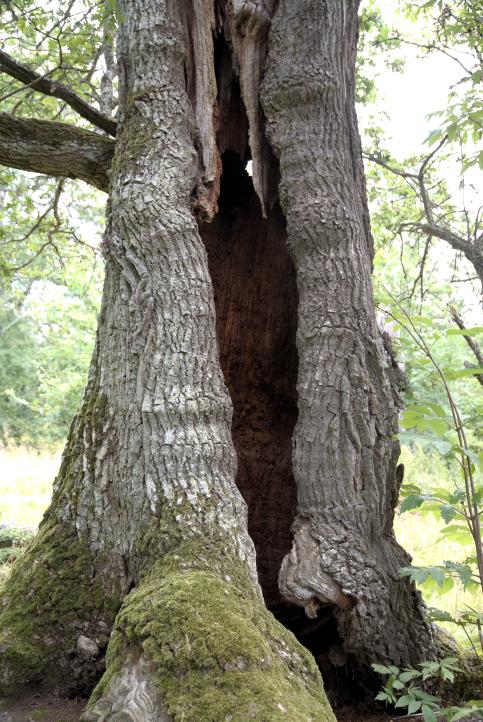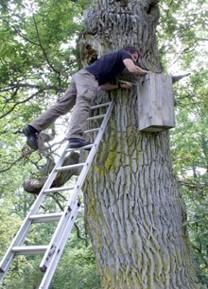Biodiversity and old grown trees

A large part of terristrial biodiversity in Europe is connected to old grown trees, such as oak, maple and small-leaved lime trees. For some species these trees could be the key to survival, but old grown trees are a scarce commodity.
Deciduous trees has during a long time been subject for human exploitation and a land use change during the 20th century has left the habitat fragmented and lacking in size. In Sweden about 6% of tree volume is deciduous trees and of 1% of the trees are regarded as old. This creates a great deficiency of habitats for a lor och species.
Tree trunk hollows

Old grown deciduous trees offer a wide range of microhabitats, including tree trunk hollows, cracks, scars and sun-exposed bark and branches. Tree trunk hollows provide habitats for birds, mammals, and many invertebrates. Tree trunk hollows are created when the tree decays from the inside. This is initiated when various specialist fungi (e.g. Laetiporus sulphureus and Phellinus robustus), which break down lignin and cellulose, colonize the dead internal woody tissue of the tree. The remaining debris accumulates in the base of the created hollow, where it slowly decomposes with other organic matter (e.g. dead insects and dead leaves), creating a nutritious porous material called wood mould.
The wood mould and the tree trunk hollows creates a very specific microhabitat, which has been identified as the most important habitat for an ecological group of beetles called saproxylic beetles (beetles dependent on dead or decaying wood)
Saproxylic beetles

Saproxylic refers to organisms that are dependent of dead wood or of other dead wood species, such as fungi, in some or most part of their lives. There are obligate saproxylic species, which are species that are completely dependent of dead wood through all their life stages. There are also facultative saproxylic species, which are dependent of dead wood for some part of their life stages, these may also facilitate other habitats.
Saproxylic beetles play a major role in forest ecosystems, where they pollinate plants and, together with fungi, break down dead wood and contributes to processes of decomposition and recycling of nutrients
They are regarded as a highly threatened ecological group in Europe. In Sweden, about 40% of the saproxylic beetles are threatened by extinction, and similar numbers can be seen all through Europe.
Conservation efforts

In a Swedish study, by Jansson et al., (2009), with an aim to support saproxylic beetles like alleculid beetles (Alleculidae), chafer beetles (Cetonini) and click beetles (Elateridae), artificial habitats were constructed. These artificial habitats consisted of wooden boxes filled with oak sawdust and oak leaves to mimic the habitat in real hollow trees. The boxes were then attached onto big hollow oak trees, about four meters above ground, in an oak landscape. Almost 70 % of the saproxylic beetle species that usually resides in hollow trees were also found in the boxes. The boxes may provide an alternative habitat for tree trunk hollows, which take a long time to develop. They may also be used as steppingstones to facilitate dispersal between different populations .
Aim
The aim of this study was to further develop these artificial habitats with bigger boxes, which were placed on the ground in green areas in or near different cities and filled with wood and compost, produced in the maintenance of the green areas. Here the boxes could act as an alternative habitat for tree trunk hollows. In this study, the effectiveness (species richness and number of species dependent of tree trunk hollows) of the bigger boxes was assessed and compared with the study on boxes attached to tree trunks, by Jansson et al., (2009) and a study of species found in tree trunk hollows, by Thomas Ranius & Nicklas Jansson (2000). Furthermore, to assess what might impact the effectiveness, i.e. species richness and family and species composition, several variables were included in the study.
Responsible for this page:
Director of undergraduate studies Biology
Last updated:
05/24/20
